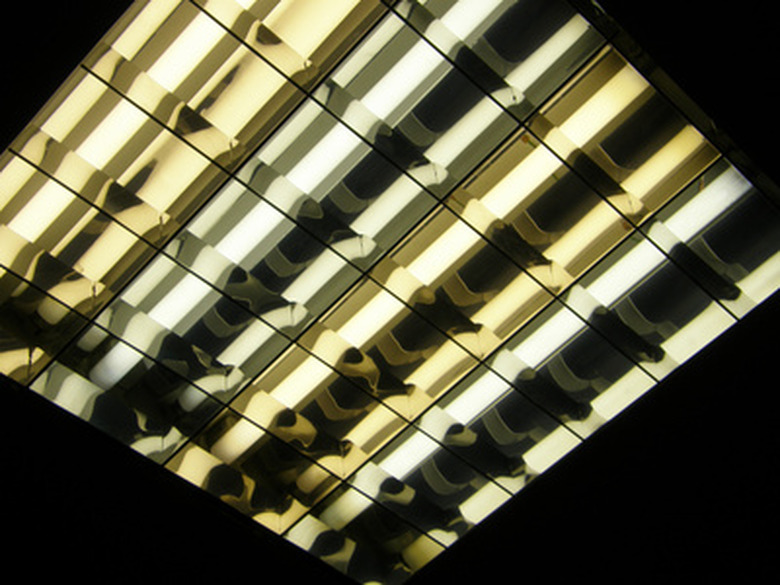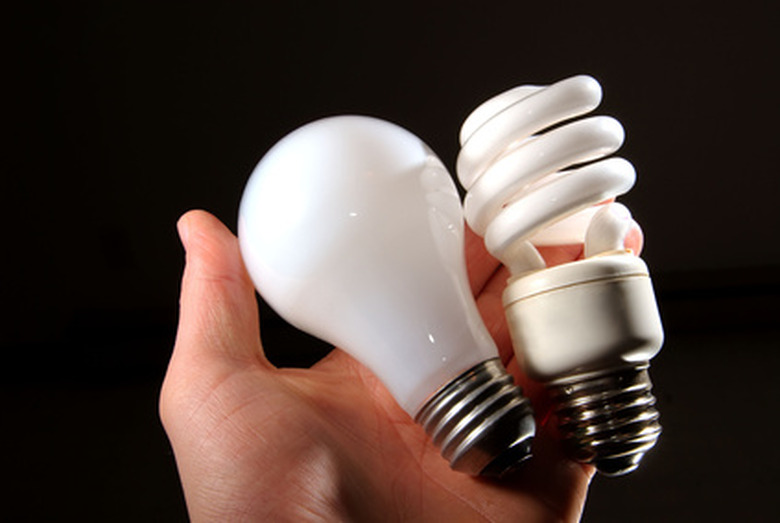Parts Of Fluorescent Lights
Fluorescent lights are found commonly in offices, industrial facilities and garages. More and more, compact fluorescent lights are replacing incandescent lights in our homes. Despite the difference in appearance, fluorescent lights are constructed in similar fashion. Fluorescent lights also are similar to the "neon lights" that we see on storefronts and in bar signs.
Tube
Tube
The tube holds the gas. Traditional fluorescent lights have tubes shaped into straight cylinders. Compact fluorescent lights, CFLs, are fluorescent tubes bent in half like a letter "U" or bent into the shape of incandescent bulbs in a swirl. In "neon lights," the tubes are bent to form graphics or words.
Phosphor coating
Phosphor coating
The inside of the tube is coated with a phosphor material. The kind of phosphors in the coating will affect the color of light that is emitted from the light tube. In "neon lights," there not always is a phosphor coating because the inert gas can give off its own color.
Gas
Gas
The gas in the tube is a mercury vapor and some inert gas, such as neon, argon or xenon. The gas is what causes the light to be emitted. When the voltage is applied, the ionized gas atoms are excited and give off that excitation energy as photons. The photons of inert gas are in the visible range, but the photons emitted by mercury ions are in the ultraviolet range. The ultraviolet range isn't visible to human eyes, but these ultraviolet photons strike the phosphor coating and cause it to light up.
Electrodes
Electrodes
Straight fluorescent lights have two sets of electrodes (one at each end of a tube) that connect to the fixture via two small metal prongs, which are visible outside the tube. The electrodes are hidden in CFLs because they are in the screw-type base. CFLs also can be made without electrodes; in this case, they rely on an arc from the low pressure gas discharge to emit light.
Ballast
Ballast
The ballast actually is a power supply rather than a buoyancy device as its name implies. There are magnetic and electronic ballasts. Electronic ballasts are found only in newer fixtures; they don't get as hot or loud as a magnetic ballast. However, magnetic ballasts generally last longer. While electronic and magnetic ballasts perform essentially the same function, they are not interchangeable. To change the kind of ballast, for instance if you prefer less humming noise, you must replace the entire fixture.
Fixtures
Fixtures
Fixtures can be utilitarian or decorative, but the purpose of the fixture is to provide safe housing for the tube and ballast. The fixture also houses connections to a power source, such as electrical wiring or batteries.
Starter
Starter
Only older fluorescent light fixtures have starters, which are small metallic cylinders. The starter was meant to delay electricity coming into the gas-filled tube.
References
- Fluorescent light fixture; Patent number: 2769897; 1956
- Neon light; Patent number: 2448937; 1948
- Electrodeless fluorescent lamp; Patent number: 5959405; 1996

